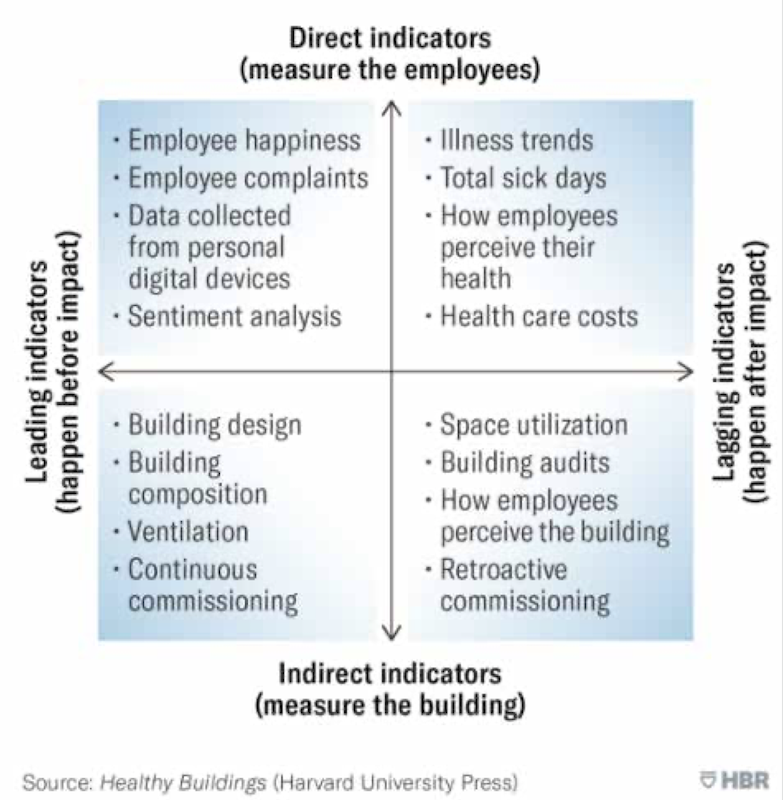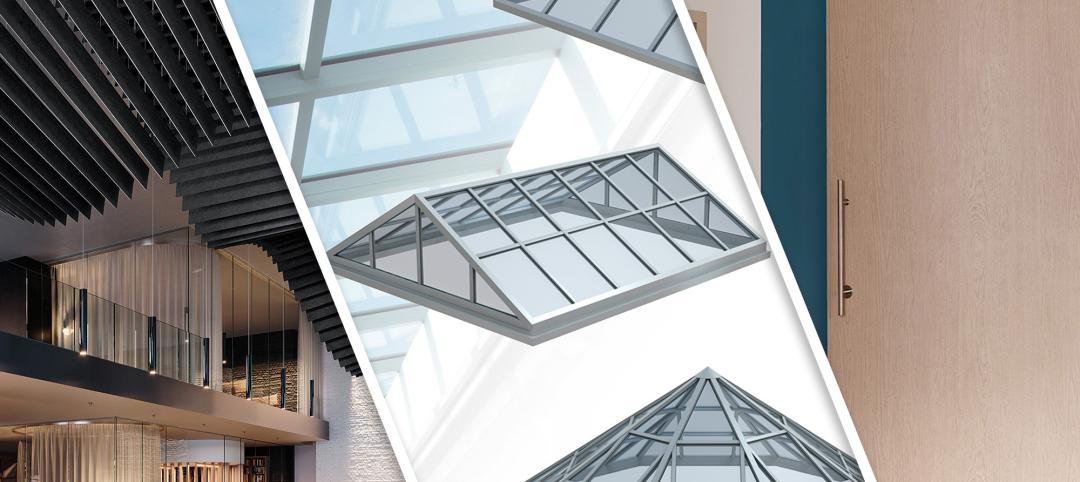Making buildings healthier—through research, code changes, and incentives—is what the National Institute of Building Sciences (NIBS) recommends in its eight-page 2020 Moving Forward Report that the Institute’s Consultative Council of building community leaders has just published.
The report posits that Americans spend 90% of their time indoors, on average, a dynamic that was complicated by the COVID-19 virus. Ensuring that spaces where people work and live are healthy “should be seen as a fundamental pillar of public health and community resilience,” the report states.
The paper focuses on three components of healthy buildings:
•Indoor environmental quality
•Designs that promote health
•The transfer of knowledge between building owners and public health officials
The indoor environment presents unique risks to building occupants, and varies greatly by building type, operations, and location. The report cites studies that show harmful contaminants present indoors at concentrations two to five times higher than outdoors. A recent study of 3,000 people across 40 buildings, by the Centers for Disease Control and Prevention, found that 57% of sickness can be attributed to poor ventilation.
The pandemic accentuated the need for “clean, properly ventilated, and well-filtered air [as] critical to health occupants at all times.”
The report went on to say that “healthy buildings are a critical component of our national infrastructure, and should be intricately entwined with the concepts of resilience and social equity, both on a building by building basis and in the surrounding community. Building owners and public health officials should work with planners, architects, and designers to ensure that sound practices in building design and resilience are core components of community development.”
INVESTING IN AMERICA’S FUTURE HEALTH

Harvard Business Review recently published this grid of how healthy buildings can be measured.
Among the NIBS Council’s recommendations to the Biden Administration are the following:
•The Administration, U.S. Department of Energy (DOE), The Centers for Disease Control and Prevention (CDC), U.S. Environmental Protection Agency (EPA), National Institute of Standards and Technology (NIST) and other relevant federal agencies should increase investment into critical research on the impacts of indoor environmental quality (IEQ) and resilience on health and productivity. Of particular importance is research into how retrofits to the nation’s existing building stock can be used to improve IEQ.
•Federal agencies, including DOE, NIST, EPA, General Services Administration (GSA), and United States Department of Housing and Urban Development (HUD), should support research aimed at identifying improvements to building codes and other criteria that can provide cost-effective approaches to enhanced building performance. This should include opportunities to shorten the regulatory and code development process, and enable it to be more anticipatory of current and future disruptions to public health.
•Congress, U.S. Department of Transportation, HUD, DOE, Federal Emergency Management Agency and EPA, with input from the community-based organizations, advocates, and the private sector, should identify and enact policies, including incentive programs, that encourage building owners and operators to invest in critical activities that promote healthy IEQ. Clean water, healthy high-performing buildings, clean interior and exterior air, and fair and equitable access to healthy and resilient places are critical components of our nation’s infrastructure. Particular incentive should be given to supporting improvements in disadvantaged communities or populations that are impacted by flaws in existing structures, those constructed with unsafe or toxic materials, or that present unsafe living or working conditions to occupants.
A SHIFT TOWARD SOCIAL EQUITY
NIBS releases a Moving Forward report every year. To that end, last December the Consultative Council held a CEO Roundtable entitled “Improving the Workforce of the Built Environment through Social Equity.” The roundtable discussed the current state of diversity, equity, and inclusion (DEI) within the building industry and how leaders present could help drive the industry forward. This included the need to develop survey work related to DEI to inform industry activities, develop core metrics for tracking progress, and partner with core industry stakeholders to drive critical DEI initiatives.
Throughout 2021, the Consultative Council will lead these efforts to affect positive change in diversity, equity, and inclusion in our workforce and the larger built environment.
Related Stories
Codes and Standards | Sep 25, 2023
Modern codes, construction techniques saved structures in Maui wildfire
Modern building codes and construction techniques were effective in saving buildings from the devastating wildfire in Maui on August 9th, according to a recent report, IBHS Early Insights Lahaina Fire—2023, from the Insurance Institute for Business and Home Safety’s research division.
Mass Timber | Sep 19, 2023
Five Things Construction Specialties Learned from Shaking a 10-Story Building
Construction Specialties (CS) is the only manufacturer in the market that can claim its modular stair system can withstand 100 earthquakes. Thanks to extensive practical testing conducted this spring at the University of California San Diego (UCSD) on the tallest building ever to be seismically tested, CS has identified five significant insights that will impact all future research and development in stair solutions.
Engineers | Sep 15, 2023
NIST investigation of Champlain Towers South collapse indicates no sinkhole
Investigators from the National Institute of Standards and Technology (NIST) say they have found no evidence of underground voids on the site of the Champlain Towers South collapse, according to a new NIST report. The team of investigators have studied the site’s subsurface conditions to determine if sinkholes or excessive settling of the pile foundations might have caused the collapse.
Resiliency | Sep 11, 2023
FEMA names first communities for targeted assistance on hazards resilience
FEMA recently unveiled the initial designation of 483 census tracts that will be eligible for increased federal support to boost resilience to natural hazards and extreme weather. The action was the result of bipartisan legislation, the Community Disaster Resilience Zones Act of 2022. The law aims to help localities most at risk from the impacts of climate change to build resilience to natural hazards.
Metals | Sep 11, 2023
Best practices guide for air leakage testing for metal building systems released
The Metal Building Manufacturers Association (MBMA) released a new guidebook, Metal Building Systems - Best Practices to Comply with Whole-Building Air Leakage Testing Requirements.
Codes and Standards | Aug 31, 2023
Community-led effort aims to prevent flooding in Chicago metro region
RainReady Calumet Corridor project favors solutions that use natural and low-impact projects such as rain gardens, bioswales, natural detention basins, green alleys, and permeable pavers, to reduce the risk of damaging floods.
Sustainability | Aug 15, 2023
Carbon management platform offers free carbon emissions assessment for NYC buildings
nZero, developer of a real-time carbon accounting and management platform, is offering free carbon emissions assessments for buildings in New York City. The offer is intended to help building owners prepare for the city’s upcoming Local Law 97 reporting requirements and compliance. This law will soon assess monetary fines for buildings with emissions that are in non-compliance.
Resiliency | Aug 7, 2023
Creative ways cities are seeking to beat urban heat gain
As temperatures in many areas hit record highs this summer, cities around the world are turning to creative solutions to cope with the heat. Here are several creative ways cities are seeking to beat urban heat gain.
Products and Materials | Jul 31, 2023
Top building products for July 2023
BD+C Editors break down 15 of the top building products this month, from cleanroom doors to window storm protection systems.
Sustainability | Jul 27, 2023
USGBC warns against building energy code preemptions, rollbacks
In a recent editorial, the USGBC cited a growing number of U.S. state legislators who are “aiming to roll back building energy code standards and/or preempt local governments from advancing energy-efficient building codes.”
















